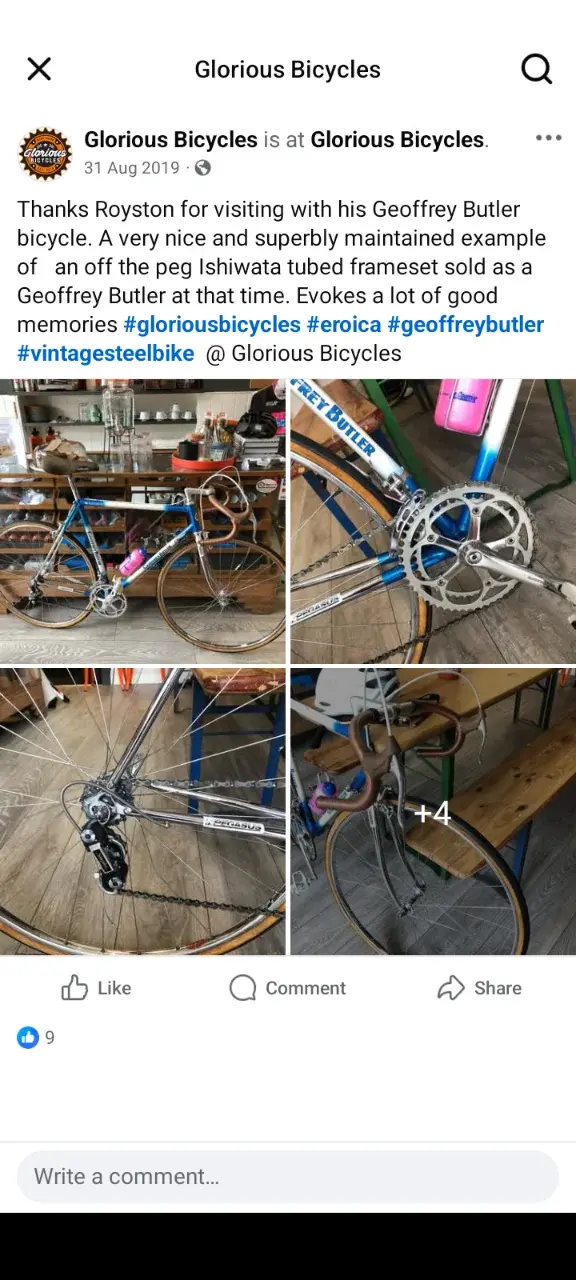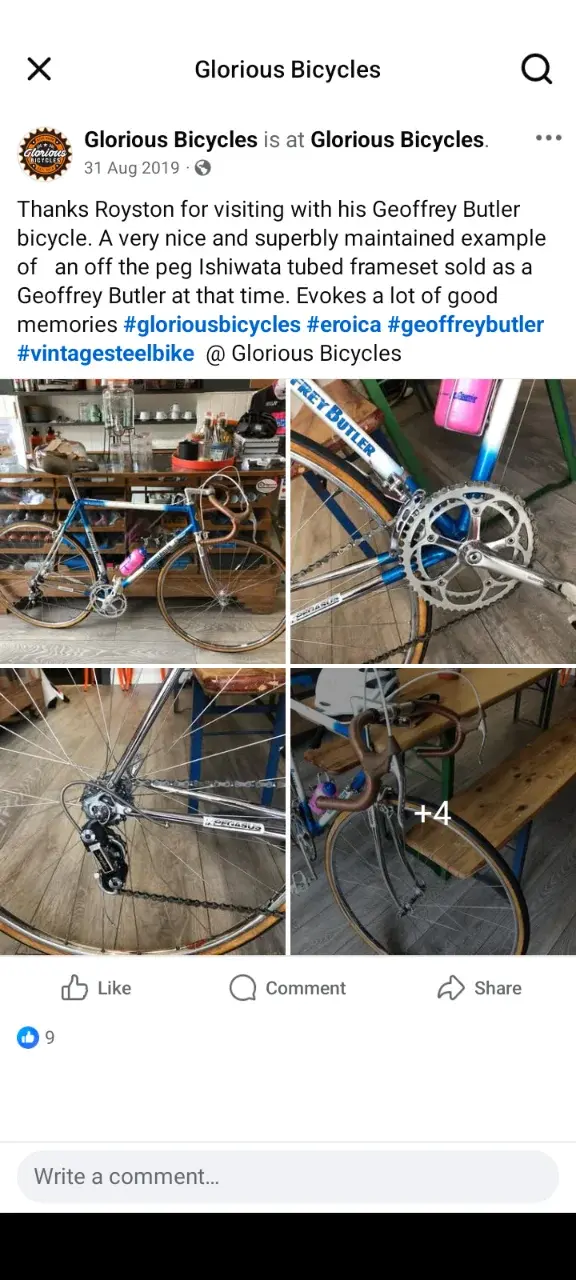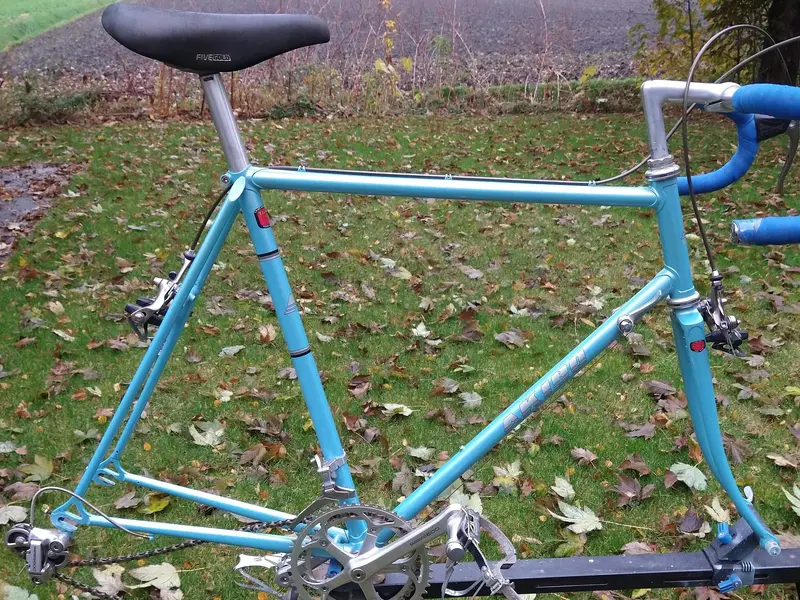I was looking for a serial number today and found one on the bb shell in the 3 o'clock position if the bicycle frameset was upright.-----
the EO marking on shell is likely to be for EISHO, a Japanese maker of lugs and shells
suspect date not prior to '76 nor later than '78
lots of spots there likely to exhibit date markings:
backside of Sakae Ringyo crank arms
portion of stem down inside steerer
right end of bar
portion of saddle pillar down inside seat tube
gear mechs
steerer
there is a helpful guide here to reading the markings:
http://www.vintage-trek.com/component_dates.htm
fork appears it might be an off-the-peg item; do fork ends match dropouts?
------
Now this bicycle does scream 1970's but the serial number is 2568. So I had a look at the classic lightweight web site and under the Geoffrey Butler section there is a frame set with serial number 2268. Which if I understand correctly from the information was built in 1968.
So could this Ishiwata frame be 1968 with later brazed additions? Also if this is correct would this make it a very early appearance in the UK of an Ishiwata frame as I believe the company only began in the late 60's?


